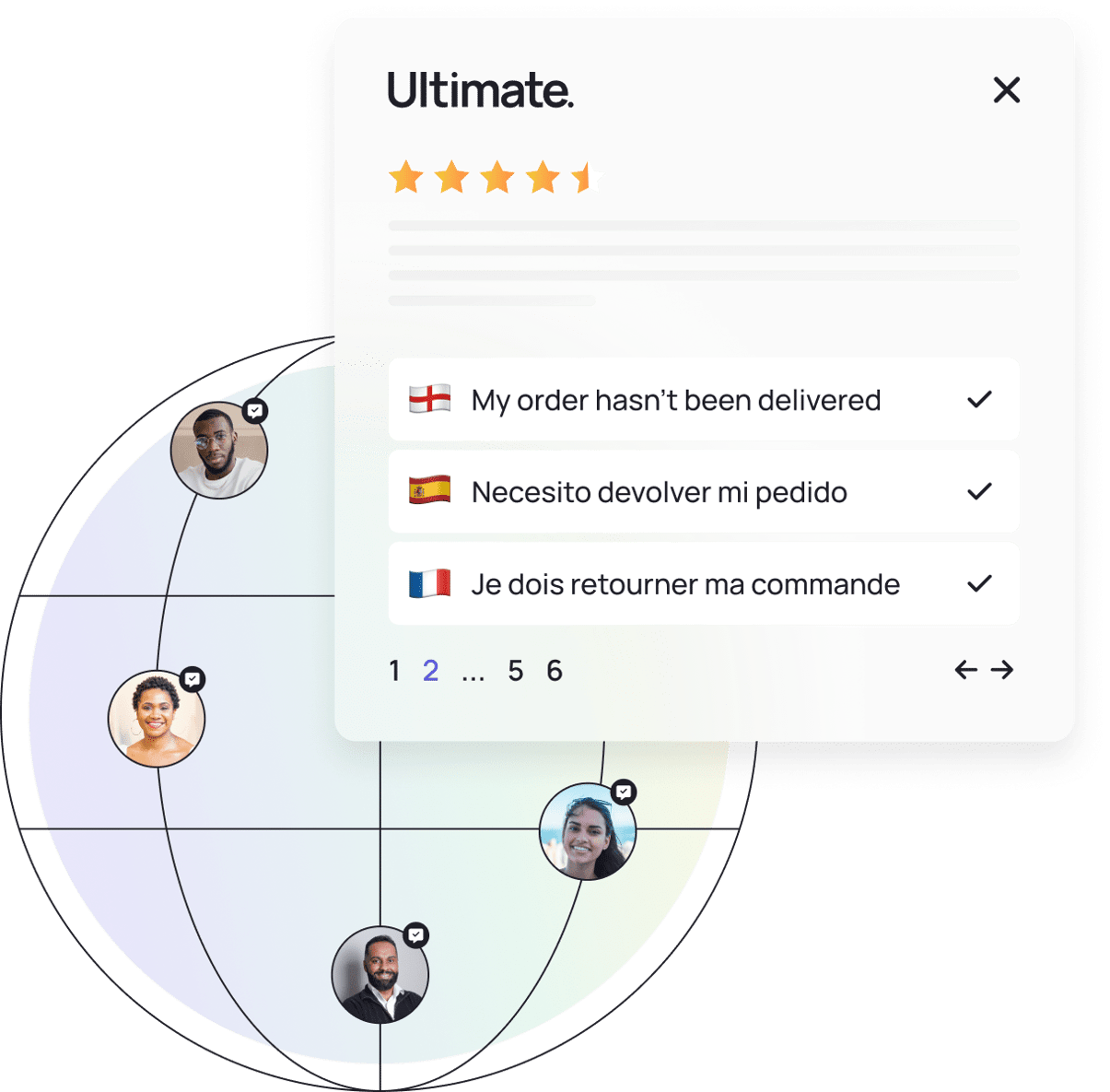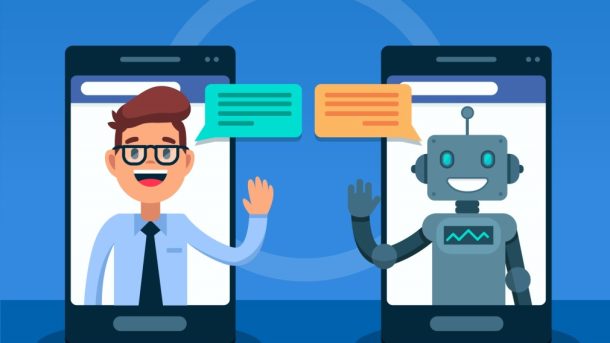Artificial intelligence has come a long way in just a few short years. That means chatbots are starting to leave behind their bad reputation — as clunky, frustrating, and unable to understand the most basic requests. In fact, according to our 2023 CX trends guide, 88% of business leaders reported that their customers’ attitude towards AI and automation had improved over the past year.
Which goes to show just how far chatbots have come. AI-powered bots use natural language processing (NLP) to provide better CX and a more natural conversational experience. And with the astronomical rise of generative AI — heralding a new era in the development of NLP — bots have become even more human-like.
Want to know how your text-based NLP chatbot works? Alright, let’s get into it.
What is an NLP chatbot?
An natural language processing chatbot is a software program that can understand and respond to human speech. Bots powered by NLP allow people to communicate with computers in a way that feels natural and human-like — mimicking person-to-person conversations. These clever chatbots have a wide range of applications in the customer support sphere. NLP bots allow brands to:
- Provide round-the-clock support and instantly resolve customer requests — without increasing agent headcount
- Drive down handling times by collecting customer details up front, before escalating to a human agent
- Free your agents from FAQs so they can focus their talents on high-value tasks that call for their empathy and problem-solving skills
- Offer native-level multilingual customer service, supporting businesses to scale across markets and regions

And these are just some of the benefits businesses will see with an NLP chatbot on their support team.
What’s the difference between NLP, NLU, and NLG?
Don’t know your NLP from your NLG? We’re here to help. There are quite a few acronyms in the world of automation and AI. Here are three key terms that will help you understand how NLP chatbots work.
- Natural language processing (NLP). Thisis a branch of artificial intelligence that allows machines to understand, analyze, and respond to human speech or writing. The main purpose of this technology is to improve human-bot communication.
- Natural language understanding (NLU). A subset NLP, NLU is all about machine comprehension — that means ensuring the bot understands the meaning behind linguistic input (whether verbal or written). In more scientific terms, NLU takes place when the machine converts user input (what they’re saying) into a logical form that the computer’s algorithms understand. The more accurate and reliable an AI engine is, the more powerful the solution will be.
- Natural language generation (NLG). NLG another subset of NLP that refers to the automatic replies created by a bot. Essentially it works like NLU in reverse: the machine first generates a logical response, which it then converts to natural language that a human can easily understand. Simply put, NLG is the automated answer to all of your customers’ problems.
Rule-based chatbots: The old-school solution
The stilted, buggy chatbots of old are called rule-based chatbots.These bots aren’t very flexible in how they interact with customers. And this is because they use simple keywords or pattern matching — rather than using AI to understand a customer’s message in its entirety.
Take this question, for example: “What is the price of your membership?”
This question can be matched with similar messages that customers might send in the future. The rule-based chatbot is taught how to respond to these questions — but the wording must be an exact match. That means your bot builder will have to go through the labor-intensive process of manually programming every single way a customer might phrase a question, for every possible question a customer might ask.
Nobody has time for that. Which means rules-based bots often end up misunderstanding what a customer has asked — leaving them unable to offer a resolution.
That’s not to say this type of chatbot is entirely useless. If your company tends to receive questions around a limited number of topics, that are usually asked in just a few ways, then a simple rule-based chatbot might work for you. But for many companies, this technology is not powerful enough to keep up with the volume and variety of customer queries.
NLP chatbots: The first generation of virtual agents
NLP-powered virtual agents are bots that rely on intent systems and pre-built dialogue flows — with different pathways depending on the details a user provides — to resolve customer issues. A chatbot using NLP will keep track of information throughout the conversation and learn as they go, becoming more accurate over time. Here are some of the most important elements of an NLP chatbot.
Key elements of NLP-powered bots
- Dialogue management: This tracks the state of the conversation. The core components of dialogue management in AI chatbots include a context — saving and sharing data exchanged in the conversation — and session — one conversation from start to finish
- Human handoff: This refers to the seamless communication and execution of a handoff from the AI chatbot to a human agent
- Business logic integration: It’s important that your chatbot has been programmed with your company’s unique business logic
- Rapid iteration: You want your bot to provide a seamless experience for customers and to be easily programmable. Rapid iteration refers to the fastest route to the right solution
- Training and iteration: To ensure your NLP-powered chatbot doesn’t go awry, it’s necessary to systematically train and send feedback to improve its understanding of customer intents using real-world conversation data being generated across channels
- Simplicity: To get the most out of your virtual agent, you’ll want it to be set up as simply as possible, with all the functionality that you need — but no more than that. There is, of course, always the potential to upgrade or add new features as you need later on
Your text-based NLP chatbot works off the following keys: utterances (ways the user refers to a specific intent), intent (the meaning behind the words a user types), entity (details that are important to the intent like order numbers and locations), context (which helps to save and share parameters across a session), and session (one conversation from start to finish, even if interrupted).
Caring for your NLP chatbot
One of the most impressive things about intent-based NLP bots is that they get smarter with each interaction. However, in the beginning, NLP chatbots are still learning and should be monitored carefully. It can take some time to make sure your bot understands your customers and provides the right responses. And to see the best results with generative AI chatbots, it’s important to make sure your knowledge base (or whichever data source your bot is connected to) covers all of your FAQs and doesn’t contain conflicting information.
Generative AI bots: A new era of NLP
Then ChatGPT burst onto the scene and changed everything. With the rise of generative AI chatbots, we’ve now entered a new era of natural language processing. Generative AI is a form of machine learning that also uses NLP. But unlike intent-based AI models, instead of sending a pre-defined answer based on the intent that was triggered, generative models can create original output. This might be text, images, videos, audio, and more.
Text-based gen AI is built using large language models or LLMs. These models (the clue is in the name) are trained on huge amounts of data. LLMs use their expansive training data to parrot human speech. And this has upped customer expectations of the conversational experience they want to have with support bots.
One of the key benefits of generative AI is that it makes the process of NLP bot building so much easier. In fact, you can launch a gen AI bot in minutes. Generative chatbots don’t need dialogue flows, initial training, or any ongoing maintenance. All you have to do is connect your customer service knowledge base to your generative bot provider — and you’re good to go. The bot will send accurate, natural, answers based off your help center articles. Meaning businesses can start reaping the benefits of support automation in next to no time.
How AI chatbots and virtual agents work
Now it’s time to really get into the details of how AI chatbots work. For intent-based models, there are 3 major steps involved — normalizing, tokenizing, and intent classification. Then there’s an optional step of recognizing entities, and for LLM-powered bots the final stage is generation. These steps are how the chatbot to reads and understands each customer message, before formulating a response. Let’s take a closer look.
- Normalizing: The bot starts by removing details that aren’t relevant and converting words to a standardized version, for example by making everything lowercase
- Tokenizing: Next, the chatbot chops up a text into pieces (also called tokens) and removes any punctuation
- Intent classification: Now that all the words are normalized and the message is broken down into smaller pieces, the bot uses AI to identify which issue the customer is asking about — known as intent
- Recognizing entities: This is an optional step where the chatbot identifies anything else within the message that is being referred to. For support bots, this might be an order number, email address, or transaction ID. With intent-based models (depending on the customer’s intent and whether any entities were recognized) they’ll be guided to a resolution through a pre-designed conversational flow
- Generation: But not for LLMs. With these next-gen NLP chatbots, the AI model will generate a number of responses using the information gathered and analyzed in all the other steps. Then, the bot selects the most appropriate response to send to the user
The AI technology behind NLP chatbots is advanced and powerful. But that doesn’t mean bot building itself is complicated — especially if you choose a provider with a no-code platform, an easy-to-use dialogue builder, and an application layer that provides seamless UX (like Ultimate). And now that you understand the inner workings of NLP and AI chatbots, you’re ready to build and deploy an AI-powered bot for your customer support.




